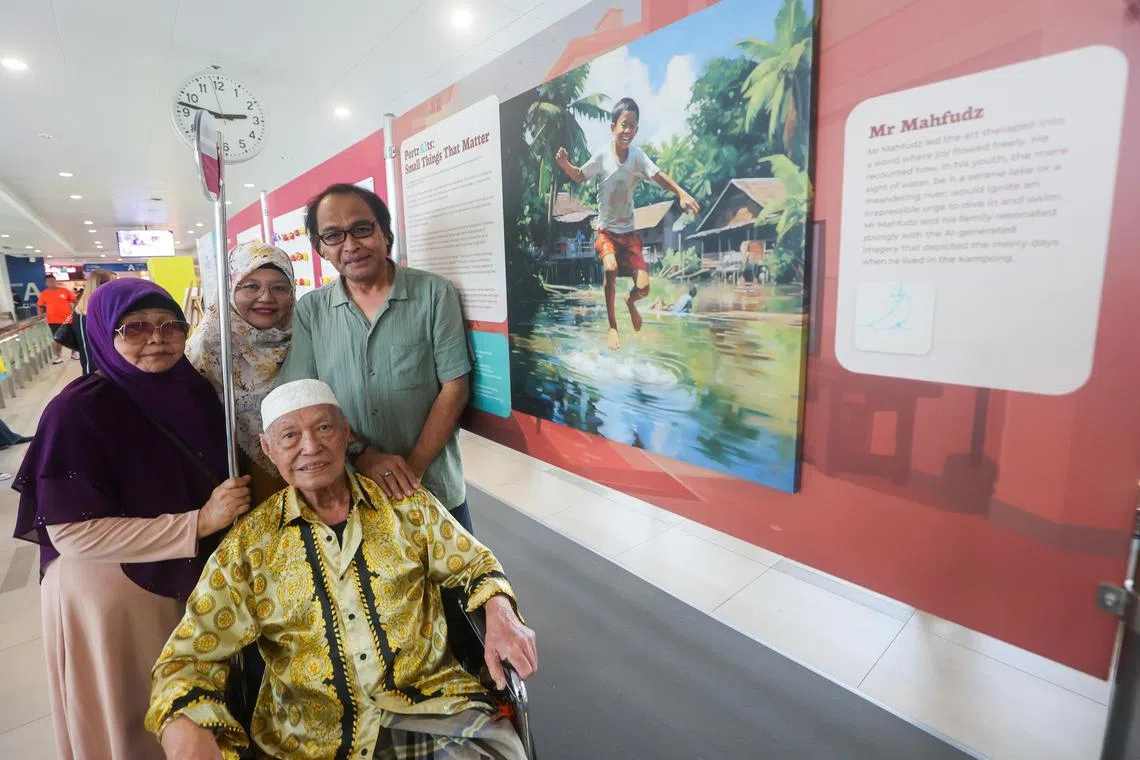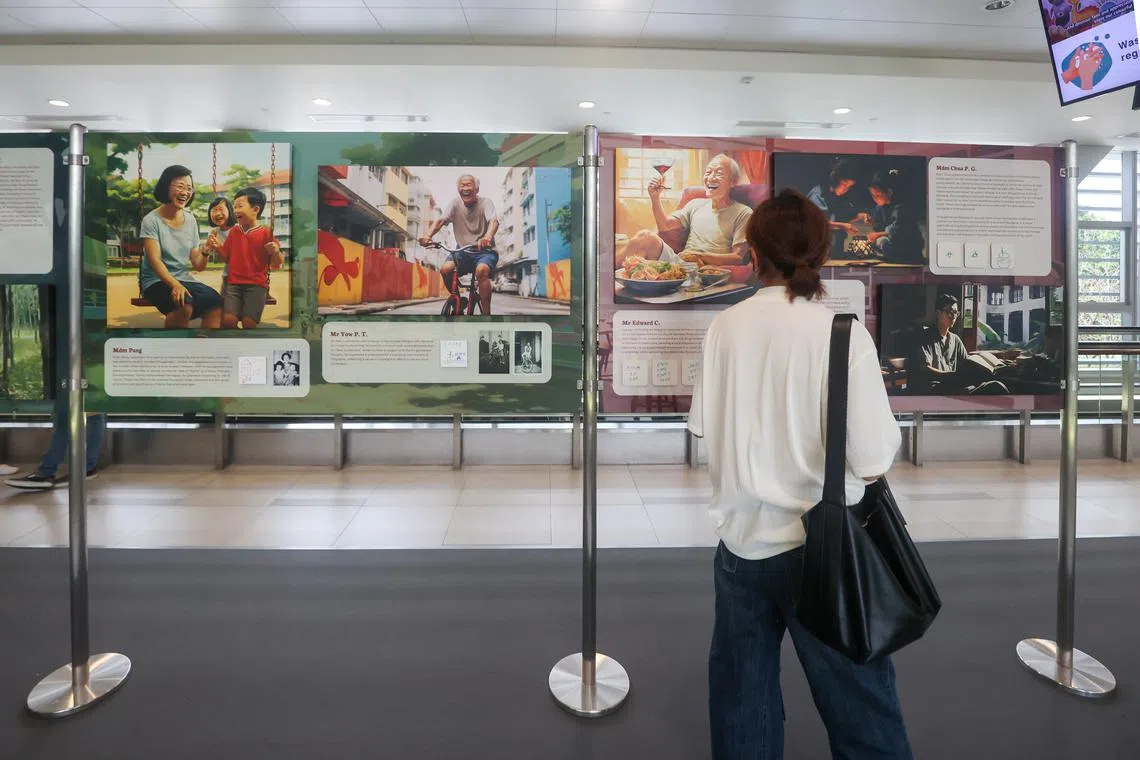Tapping artificial intelligence in art therapy for dementia patients
Sign up now: Get ST's newsletters delivered to your inbox

Mr Mahfudz Abdul Majid, who has mild dementia, and his family with an AI-generated image of Mr Mahfudz as a young boy. The art exhibition at Ng Teng Fong General Hospital runs till mid-November.
PHOTO: LIANHE ZAOBAO
SINGAPORE – Mr Mahfudz Abdul Majid’s happiest childhood memory was swimming in the cool waters of a river near the kampung he grew up in around Mount Pleasant.
“Whenever I saw the waters, I felt the need to jump in,” said the 88-year-old man, who has mild dementia.
As part of an art therapy programme at Jurong Community Hospital that taps artificial intelligence (AI), Mr Mahfudz has recreated the idyllic scene of him as a young boy splashing joyfully in the river.
The AI-generated image is now part of an art exhibition called PortrAIts: Small Things That Matter, displayed at Ng Teng Fong General Hospital till mid-November.
Since May 2023, art therapist Lee Sze-Chin has worked with nine patients from Jurong Community Hospital with mild to moderate dementia. The project spanned about two to three art therapy sessions with each patient.
Mr Lee asked them to think about the small pockets of happiness in their lives, and got them to draw items from those memories on small coasters.
Using those artworks and information from his conversations with the patients, Mr Lee and his art collective Kronoscopes created eight AI-generated images using Midjourney, a generative AI tool that transforms text prompts into visual art.
The images were then brought back to the patients, who selected the one they liked the most and suggested edits and refinements to better reflect their memories.
Mr Lee said dementia patients tend to have identities that are rooted in the past, and the goal during art therapy is to get them to express memories of the past to help them better connect with family members and to sooth themselves.
AI empowers patients affected by dementia to better visualise and capture their intentions and, in the process, improve their engagements with the therapists and their families.
“There was a patient who used to work in a rubber plantation in Singapore, helping his mother. The image generated quite a visceral response in him, because he felt the image really looked like how it was back then,” said Mr Lee.
“He recalled how his family was poor back then and how he had to rush home after school to help at the plantation, and he started tearing up and crying. As an art therapist, those are moments where I can provide socio-emotional support.”
Mr Lee added: “Another aspect is that you also give them autonomy. That’s part of the whole art therapy process – it’s not just making physical art, it’s also about getting them to make aesthetic decisions.”

The art exhibition called, called PortrAIts: Small Things That Matter, is on display at Ng Teng Fong General Hospital till mid-November.
PHOTO: LIANHE ZAOBAO
Although the clinical benefits of incorporating AI into art therapy are yet to be substantiated because this specialised area within art therapy is very nascent, Mr Lee said he has observed that patients involved in the project are able to communicate better and have demonstrated improved levels of engagement.
Two-thirds of the patients surveyed noted a positive shift in their mood following each session of AI art creation.
He hopes to streamline the process of incorporating AI in the art therapy process, in the hope of rolling out similar projects to more patients.
After the exhibition, the artworks will be put up permanently in the hospitals’ wards and waiting areas.


